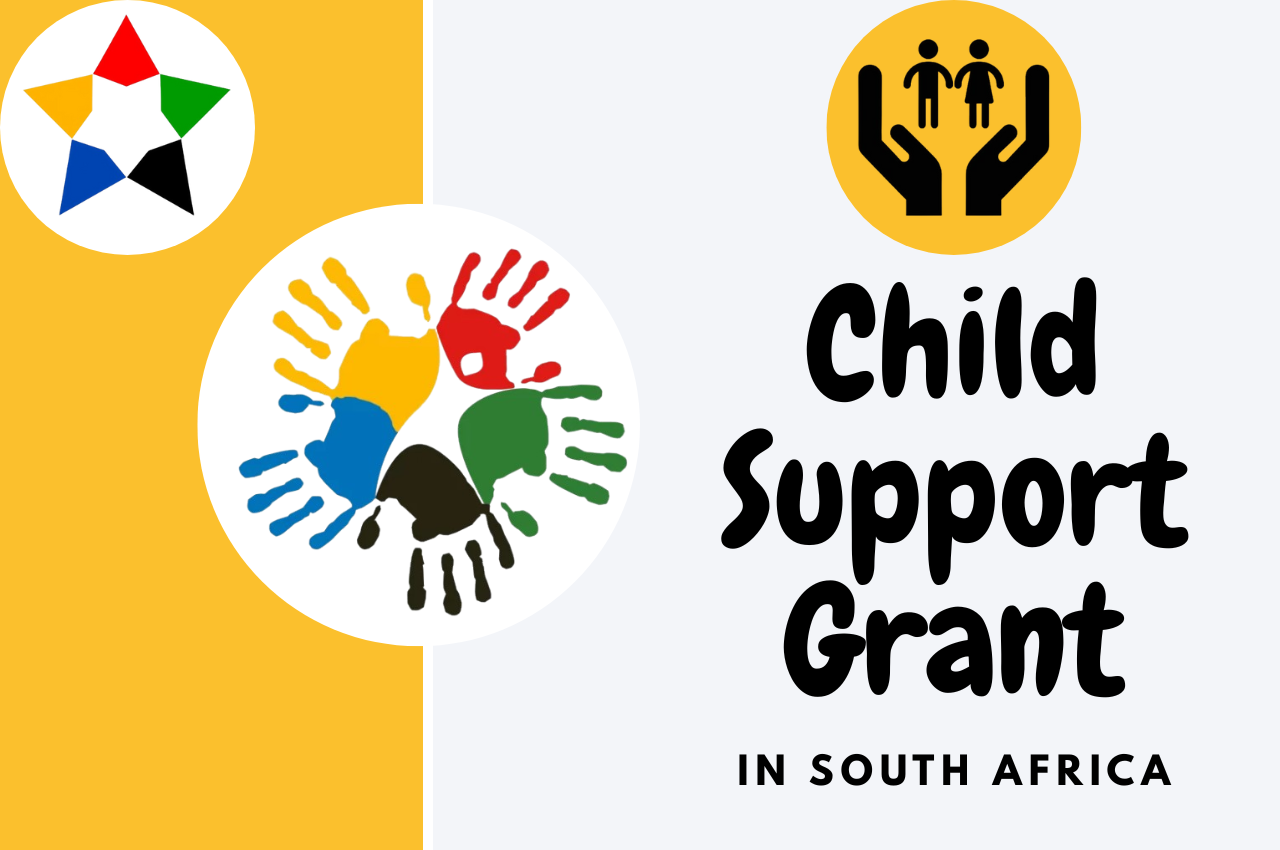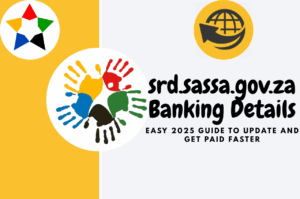The Child Support Grant is one of the key SASSA Grants aimed at helping low-income households care for their children. The child support grant is one of South Africa’s most important social assistance programs, aimed at helping caregivers provide for their children’s basic needs. Whether you’re applying for the first time or want to understand how the grant works in 2025, this guide will walk you through everything you need to know — from eligibility and application steps to payment dates and checking your status.
What is the Child Support Grant?
The Child Support Grant is a social assistance program provided by the South African Social Security Agency (SASSA). It is designed to help low-income families care for their children by providing a monthly cash payment to the child’s primary caregiver. The goal of the grant is to reduce child poverty and ensure that every child in South Africa has access to basic needs like food, clothing, and education.
This grant is not meant to replace a full household income, but rather to support the well-being of children living in financially struggling households. It’s available for children from birth until the age of 18, provided that the caregiver meets the eligibility criteria set by SASSA.
The child support grant is one of the most widely accessed grants in South Africa due to its focus on helping vulnerable children grow up in better conditions.
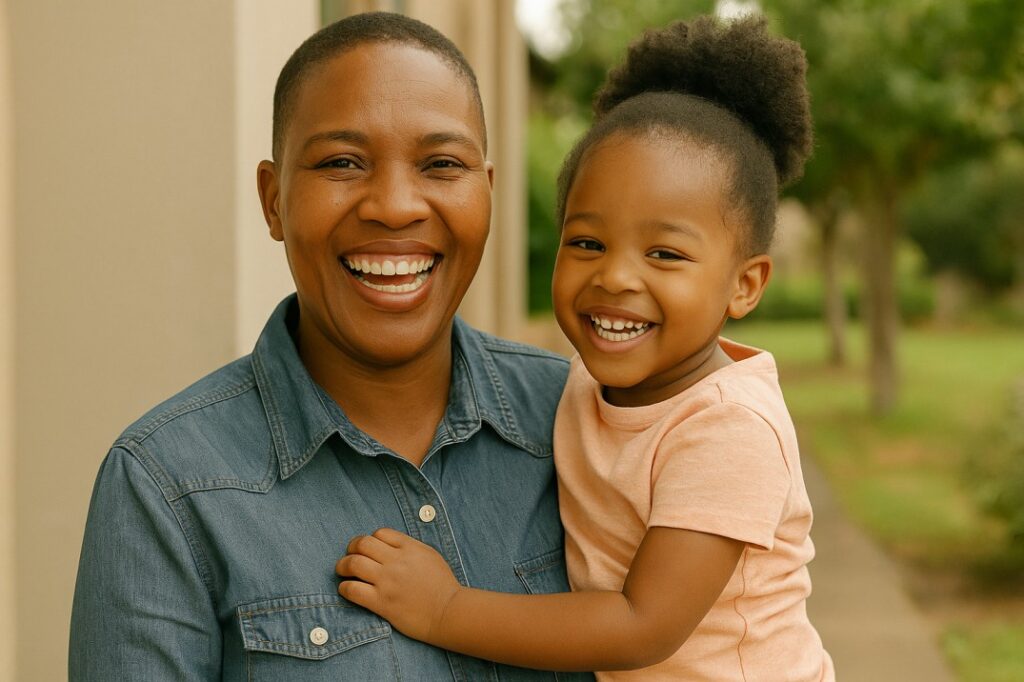
Who Qualifies for the Child Support Grant?
To receive the Child Support Grant, both the caregiver and the child must meet certain requirements set by SASSA. These criteria ensure that the grant reaches families who genuinely need financial assistance to raise children.
Eligibility Criteria for the Child Support Grant
Below are the main qualifications you must meet:
- The caregiver must be:
- A South African citizen, permanent resident, or refugee legally living in South Africa.
- The primary caregiver of the child (such as a parent, grandparent, or legal guardian).
- Earning below the income threshold set by SASSA. In 2025, this is:
- Less than R60,000 per year if single.
- Less than R120,000 per year if married.
- The child must:
- Be under the age of 18.
- Not be cared for in a state institution (like a children’s home or correctional facility).
- Live with the caregiver applying for the grant.
- Be living in South Africa.
- One caregiver per child:
Only one person can receive the child support grant for a child, even if more than one person is responsible for their care. - Required documents:
- The child’s birth certificate.
- The caregiver’s South African ID or refugee permit.
- Proof of income (such as a payslip or sworn affidavit if unemployed).
- Proof of relationship to the child (if applicable).
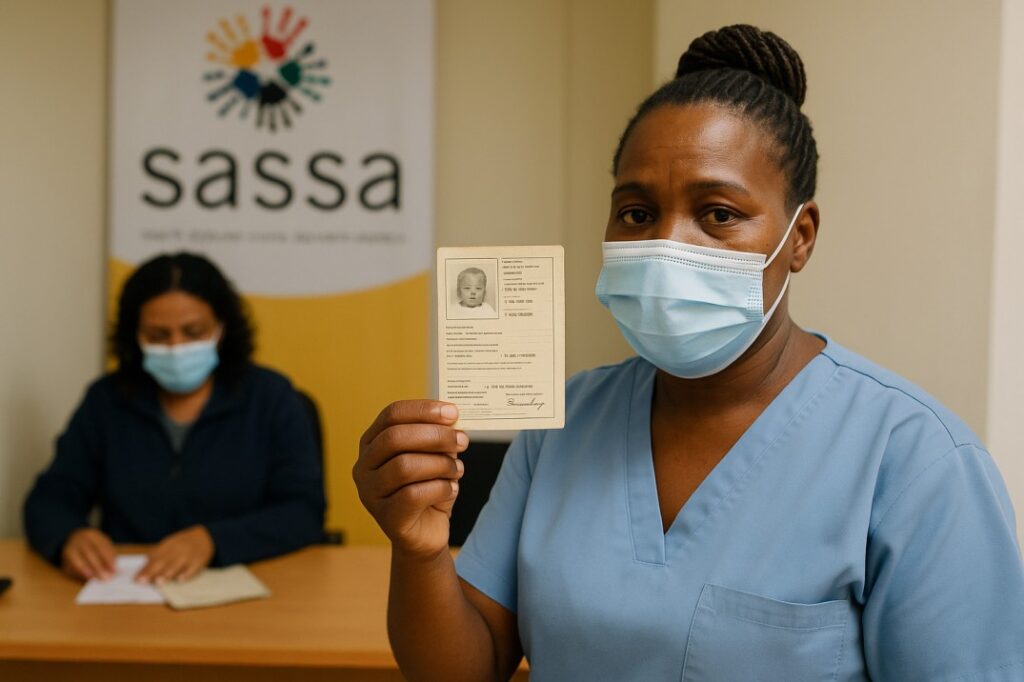
How to Apply for the Child Support Grant in 2025
Applying for the Child Support Grant in 2025 is a simple process, whether you choose to apply in person or online. The application is free, and you can get help from a SASSA official if needed. Below is a step-by-step guide to help you through the process.
Option 1: Apply at a SASSA Office (Walk-In Application)
- Visit your nearest SASSA office.
- Bring the required documents (see list below).
- Fill out the application form at the office. A SASSA officer will help you if needed.
- Submit your application and get a stamped receipt as proof. Keep this for reference.
Option 2: Apply Online (If Available)
SASSA is working on expanding its online application services. If the child support grant becomes available online in 2025:
- Visit the official SASSA services portal at https://services.sassa.gov.za.
- Register an account or log in.
- Select “Child Support Grant” from the list of grants.
- Complete the application form and upload the required documents.
- Submit the application and download or print your confirmation.
Note: If the online system is temporarily unavailable, you will need to apply at your local SASSA office.
Documents You Need to Apply
Make sure you bring or upload clear copies of these documents:
- Your South African ID or refugee permit.
- The child’s birth certificate.
- Proof of income (payslip, bank statement, or affidavit if unemployed).
- Proof of residency or address.
- A signed affidavit or proof that you are the child’s primary caregiver (if not the biological parent).
How Long Does It Take?
- You will receive a notification (via SMS or letter) once your application is approved.
- The approval process may take up to 90 days.
- Payments will be backdated to the date of application.
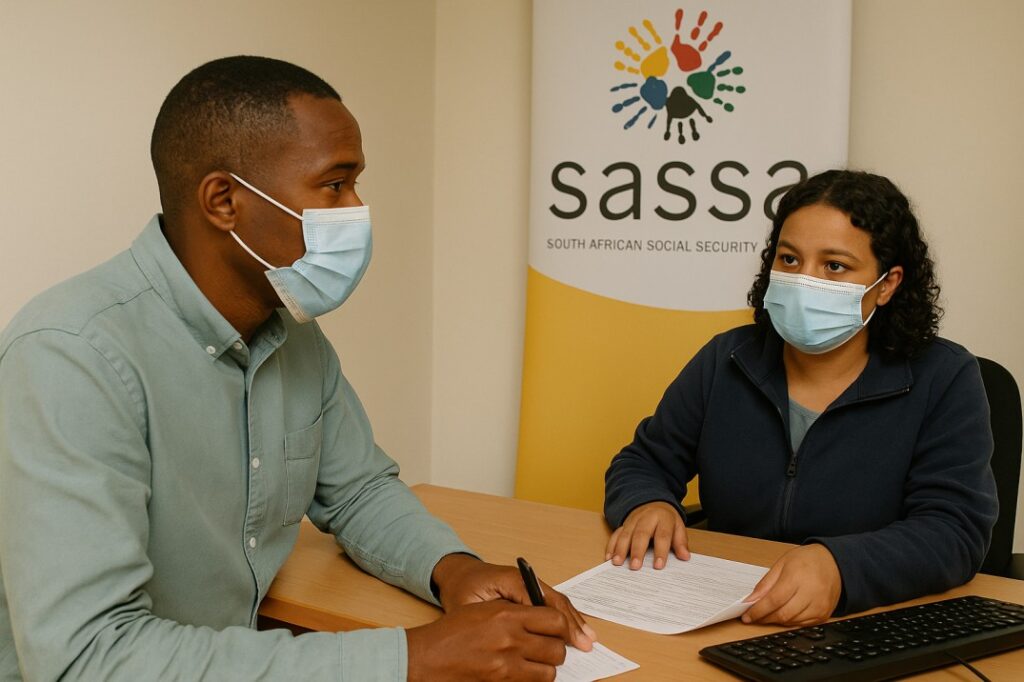
Child Support Grant Payment Dates 2025
If you’ve been approved for the Child Support Grant, it’s important to know when you can expect to receive your monthly payment. SASSA releases an official payment schedule every year, and beneficiaries are paid on specific dates each month.
Knowing the child support grant payment dates for 2025 will help you plan ahead and avoid long queues at payment points.
Monthly Payment Schedule for 2025
Here’s a table of the expected payment dates for the Child Support Grant in 2025. Please note that these dates are subject to change by SASSA, so it’s a good idea to check for updates monthly.
| Month | Payment Date |
|---|---|
| January 2025 | 5 January 2025 |
| February 2025 | 6 February 2025 |
| March 2025 | 7 March 2025 |
| April 2025 | 4 April 2025 |
| May 2025 | 6 May 2025 |
| June 2025 | 5 June 2025 |
| July 2025 | 4 July 2025 |
| August 2025 | 6 August 2025 |
| September 2025 | 5 September 2025 |
| October 2025 | 7 October 2025 |
| November 2025 | 5 November 2025 |
| December 2025 | 4 December 2025 |
Tip: Payment dates may differ slightly depending on public holidays and weekends.
Where and How You’ll Receive Payment
Once your child support grant is approved, SASSA will pay your grant through one of the following methods:
- Bank account (most secure and recommended)
- SASSA gold card (used at ATMs and retail stores)
- Post Office (though phased out in some areas)
- Retail stores like Pick n Pay, Shoprite, Checkers, Boxer, and USave
What to Do If You Don’t Receive Payment
If your payment doesn’t reflect on the scheduled date:
- Wait at least 2 working days before taking action.
- Check your grant status online or via WhatsApp/USSD.
- Visit or call your nearest SASSA office for help.
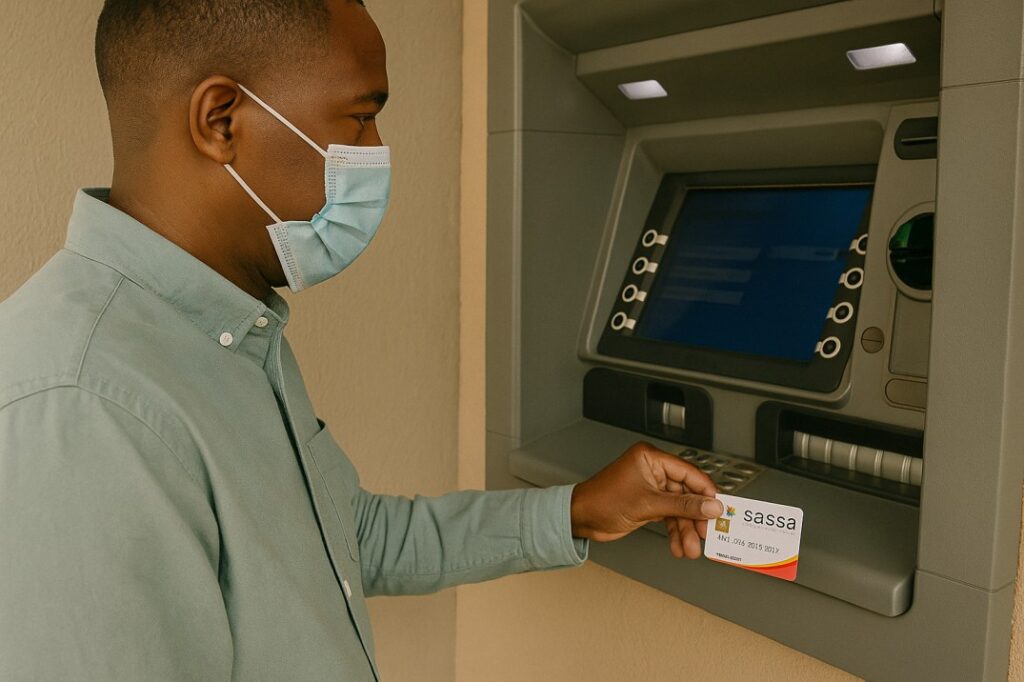
How Much is the Child Support Grant in 2025?
The Child Support Grant amount is reviewed and adjusted by the South African government each year based on inflation and the national budget. In 2025, the grant amount has slightly increased to provide more support to low-income families raising children.
Current Child Support Grant Amount (2025)
As of April 1, 2025, the child support grant is R530 per month per child.
This means if you are caring for more than one child and qualify for each, you will receive R530 for each child, paid monthly by SASSA.
Top-Up Option (Extended Child Support Grant)
In some cases, caregivers may also qualify for the Child Support Grant Top-Up, which provides an additional R250 per month. This is designed for:
- Orphaned children in the care of relatives.
- Children being raised without parental support.
If you meet the criteria, your total monthly support per child can be as much as R780 in 2025.
Is the Grant Enough?
While the child support grant helps cover basic needs like food, clothing, and school supplies, it is not meant to fully replace household income. Caregivers are encouraged to combine the grant with other forms of income or community support when possible.
Suggested Places to Add Images:
- Image idea #1: A bold infographic showing “R530 per child” with a breakdown of how the grant is typically used (e.g., food, school items).
- Placement: Directly under the heading “Current Child Support Grant Amount (2025)”.
- Image idea #2: A visual showing the Top-Up Grant (before vs. after: R530 → R780).
- Placement: In the section “Top-Up Option”.
- Image idea #3: A pie chart or simple budget graphic showing common expenses covered by the grant.
- Placement: In the section “Is the Grant Enough?”
How to Check Your Child Support Grant Status
After applying for the Child Support Grant, it’s important to keep track of your application or payment progress. SASSA offers several convenient ways to check your child support grant status, so you don’t need to visit an office in person unless there’s a problem.
Here’s how you can check the status of your application or monthly payment:
1. Check Your Status Online (SASSA Website)
You can check your child support grant status through the official SASSA website:
Steps:
- Visit https://srd.sassa.gov.za
- Click on “Check My Status” or navigate to the grant section.
- Enter your South African ID number and mobile number.
- View your application or payment status instantly.
Note: This portal is also used for SRD grants but includes status info for other grants too.
2. Use the SASSA WhatsApp Line
You can also check your status using WhatsApp:
- Save this number: 082 046 8553
- Send a message saying “Status” or “Check Status”
- Follow the instructions and enter your ID number
3. Use the SASSA USSD Code (No Data Needed)
- Dial 1347737# from your mobile phone
- Follow the prompts to check your grant status
This option is useful if you don’t have access to the internet.
4. Visit or Call Your Nearest SASSA Office
If your online or mobile checks don’t work, or if you suspect an issue (like delayed payment or rejection), visit your nearest SASSA office or call the national helpline at 0800 60 10 11.
What You Can See When Checking Status
When you check your child support grant status, you may see:
- “Pending” – your application is still being processed
- “Approved” – your application is successful and payment is on the way
- “Declined” – your application was unsuccessful (check reason and appeal if needed)
- “Paid” – payment has been made (along with date and payment method)
What to Do if Your Application is Declined
If your application for the Child Support Grant is declined, don’t panic. Many applications are rejected due to missing documents, incorrect information, or not meeting certain eligibility requirements. The good news is that you can appeal the decision or fix the issue and reapply.
Here’s what you need to do if your child support grant application is not approved:
1. Find Out Why Your Application Was Declined
Start by checking the reason for the decline. You can do this:
- On the SASSA status check portal
- Through WhatsApp or USSD
- By visiting your nearest SASSA office
Common reasons for rejection include:
- Incomplete or missing documents
- Incorrect or inconsistent personal details
- Exceeding the income threshold
- The child already receiving a grant from another caregiver
2. Gather the Correct Information or Documents
Once you know the reason:
- Fix any errors on your application
- Collect or update your supporting documents (e.g., proof of income, affidavits, ID copies)
- Make sure the child’s birth certificate and your ID are clear and valid
3. Submit an Appeal (Reconsideration Request)
If you believe the rejection was a mistake, you can submit a written appeal to SASSA. This should be done within 90 days of receiving the decline notice.
How to appeal:
- Visit your nearest SASSA office
- Request an appeal form and complete it with your details and reason for appeal
- Submit any additional documents that support your case
You can also contact the SASSA helpline (0800 60 10 11) for help with your appeal.
4. Reapply if Necessary
In cases where the issue can’t be appealed (e.g., missing deadline or disqualification), you may need to reapply. Make sure all your information is accurate and documents are complete before reapplying.
Tips to Avoid Rejection in the Future
- Double-check that all documents are valid and certified
- Make sure your ID and your child’s birth certificate are not expired or damaged
- Don’t submit false or misleading income information
- Keep contact details updated so SASSA can reach you
Responsibilities of Caregivers Receiving the Grant
Once approved for the Child Support Grant, caregivers have a responsibility to use the funds appropriately and ensure the well-being of the child. The grant is meant to support the basic needs of the child, not to benefit anyone else in the household.
Below are the key responsibilities that come with receiving the child support grant:
1. Use the Grant for the Child’s Needs
The money should be used to support the child’s daily living. This includes:
- Food and nutrition
- Clothing and hygiene products
- School fees, uniforms, and supplies
- Healthcare or transportation for school and clinics
Misuse of the funds (e.g., spending on alcohol, gambling, or unrelated expenses) may lead to an investigation and cancellation of the grant.
2. Ensure the Child Remains in Your Care
Only the primary caregiver — the person who lives with and looks after the child — can receive the child support grant. If the child moves or changes caregivers, this must be reported to SASSA.
Failure to notify SASSA could result in suspension of the grant or legal action.
3. Keep Your Information Updated
If your personal or financial circumstances change, you must inform SASSA. This includes:
- Change of address or phone number
- Change in income
- Change in marital status
- If the child no longer lives with you
Keeping your details up to date ensures that you don’t miss out on payments or get disqualified later.
4. Renew or Reapply If Required
In some cases, SASSA may request updated documents or a review of your eligibility. Always respond to these requests on time to avoid suspension of your child support grant.
5. Report Any Irregularities
If you notice any problems with your grant — such as missing payments, someone else using your details, or fraud — report it immediately to your nearest SASSA office.
Frequently Asked Questions (FAQs)
1. Who can apply for the Child Support Grant?
Any primary caregiver of a child under 18 years old who meets the income and residency requirements can apply for the child support grant.
2. Can I apply for the grant for more than one child?
Yes, you can apply for the child support grant for each eligible child in your care.
3. What documents do I need to apply?
You’ll need your South African ID or refugee permit, the child’s birth certificate, proof of income, and proof of residence. Additional documents may be required if you are not the biological parent.
4. How do I check the status of my Child Support Grant application?
You can check your status online at the SASSA website, via WhatsApp, USSD, or by contacting your nearest SASSA office.
5. What happens if my application is declined?
You can submit an appeal within 90 days of being declined. Make sure to correct any mistakes and provide all required documents.
6. Can grandparents or other relatives apply for the grant?
Yes, the primary caregiver—whether a parent, grandparent, or legal guardian—can apply for the child support grant.
7. Can I receive the Child Support Grant if I am unemployed?
Yes. The grant is designed to assist caregivers regardless of employment status, as long as the income threshold is met.
8. What should I do if my payment is late?
Check your grant status online or contact SASSA immediately. Payments can sometimes be delayed due to administrative issues.
9. Do I need to renew the grant every year?
SASSA may request updated documents or reviews. Respond promptly to ensure continuous payments.
Conclusion
The Child Support Grant plays a vital role in supporting South African families by providing essential financial assistance to caregivers raising children in need. Understanding who qualifies, how to apply, and where to check your grant status can make the process much easier and faster.
If you are eligible, don’t hesitate to apply for the child support grant to help secure a better future for your child. Remember to keep your documents up to date, use the grant responsibly, and reach out to SASSA if you need help along the way.
By staying informed and proactive, you can ensure your child receives the support they deserve.

